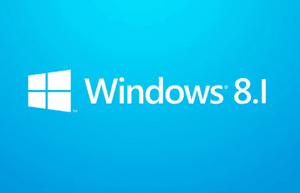 I have written several posts in the past that explain various ways to back up your primary hard drive because it’s extremely important to always have a current backup of your entire boot drive available.
I have written several posts in the past that explain various ways to back up your primary hard drive because it’s extremely important to always have a current backup of your entire boot drive available.
That being said, Windows 8.1 also has a pretty nifty feature that makes it extremely easy to keep multiple, up-to-date backup copies of just your user-created files.
This awesome tool is called File History, and it works by copying the contents of selected folders to either an external USB hard drive or a USB flash drive at regular intervals. Any documents located in those folders are backed up on that schedule, and any changes made to a file (or files) in one or more of those folders are backed up as well.
These multiple backups make it easy to undelete an accidentally deleted file or revert to a previous version of that file with just a few mouse clicks.
Here is a list of everything that File History backs up by default:
- Your Libraries (both the default libraries and any custom libraries)
- The current contents of the Desktop
- Your Contacts List
- Your Internet Explorer Favorites
- OneDrive (formerly known as SkyDrive)
You can exclude any folders or libraries that you don’t want backed up from the list above.
As awesome as it is, File History isn’t turned on by default. Follow these steps to turn it on:
1 – Make sure you have a backup device plugged into a USB port. The backup device can be either an external USB hard drive or a large USB flash drive. (Note: You can also use a secondary internal hard drive if one is installed.)
2 – While on the Desktop, right-click on the Start button in the lower left-hand corner of the screen.
3 – Click Control Panel.
4 – Under System and Security, click Save backup copies of your files with File History.
5 – If more than one potential backup device is installed, click Select Drive in the left-hand column and select the drive you wish to use to store your backups, then click Ok. (Note: You can skip this step if only one potential backup device is available.)
6 – Click the Exclude folders and/or Advanced settings links if you wish to make changes to the default settings used by the “File History” utility.
7 – Click the button labeled Turn on. Windows will now begin backing up your files onto the selected drive, then back them up again at the intervals defined in the Advanced settings pane.
That’s all there is to turning on and configuring the File History utility! If you ever need to restore your files from a backup, simply follow steps 1-4 above, click the Restore personal files link, then follow the prompts.